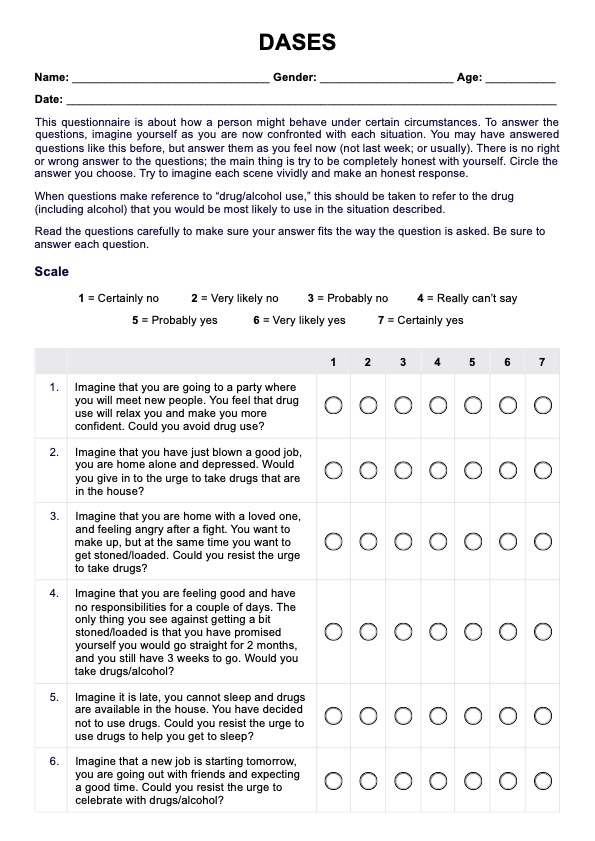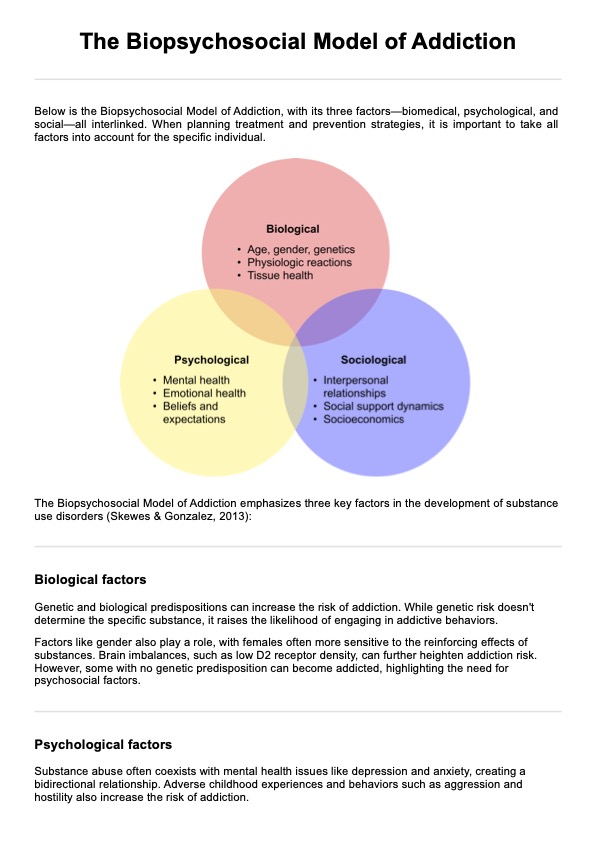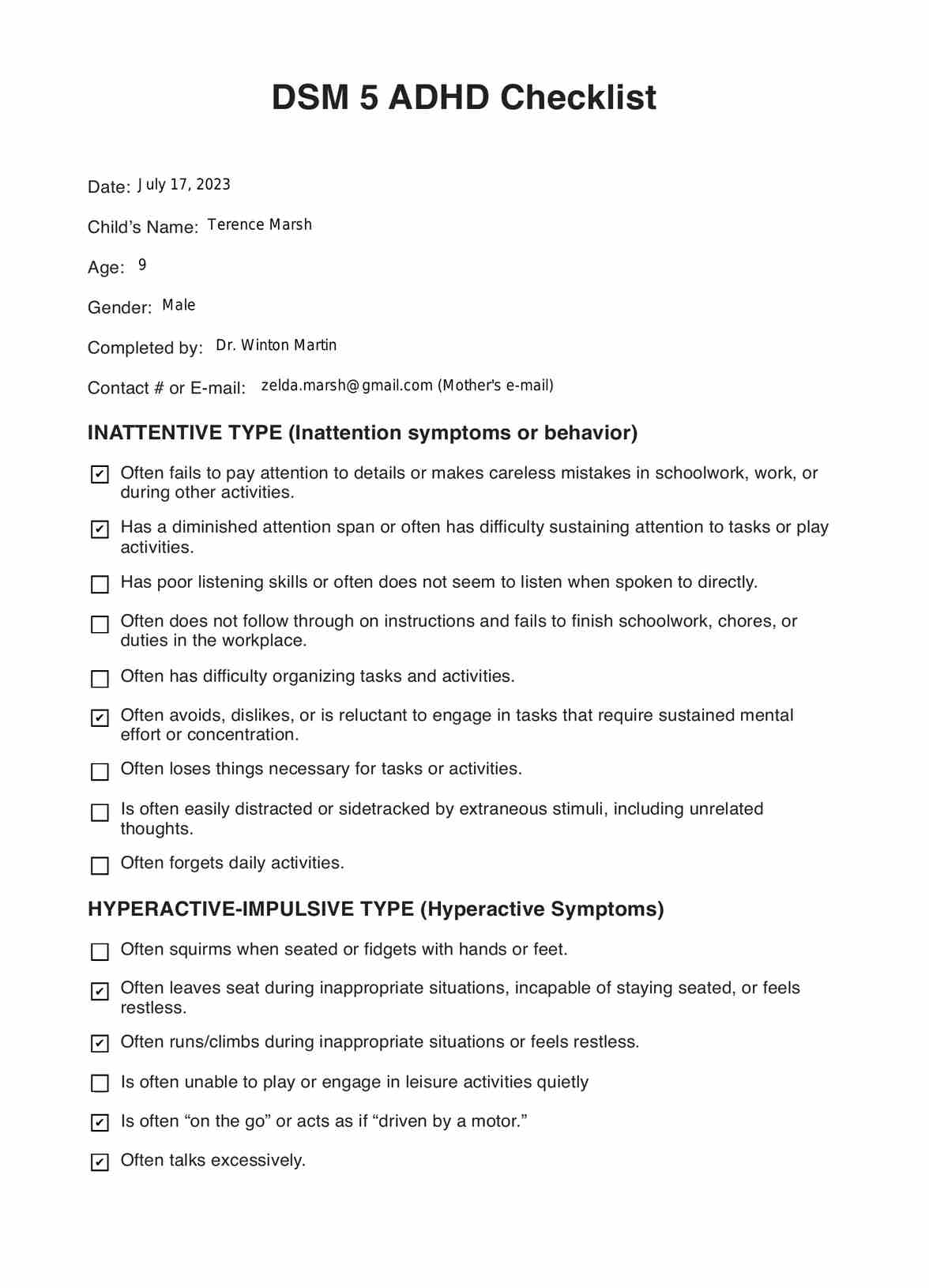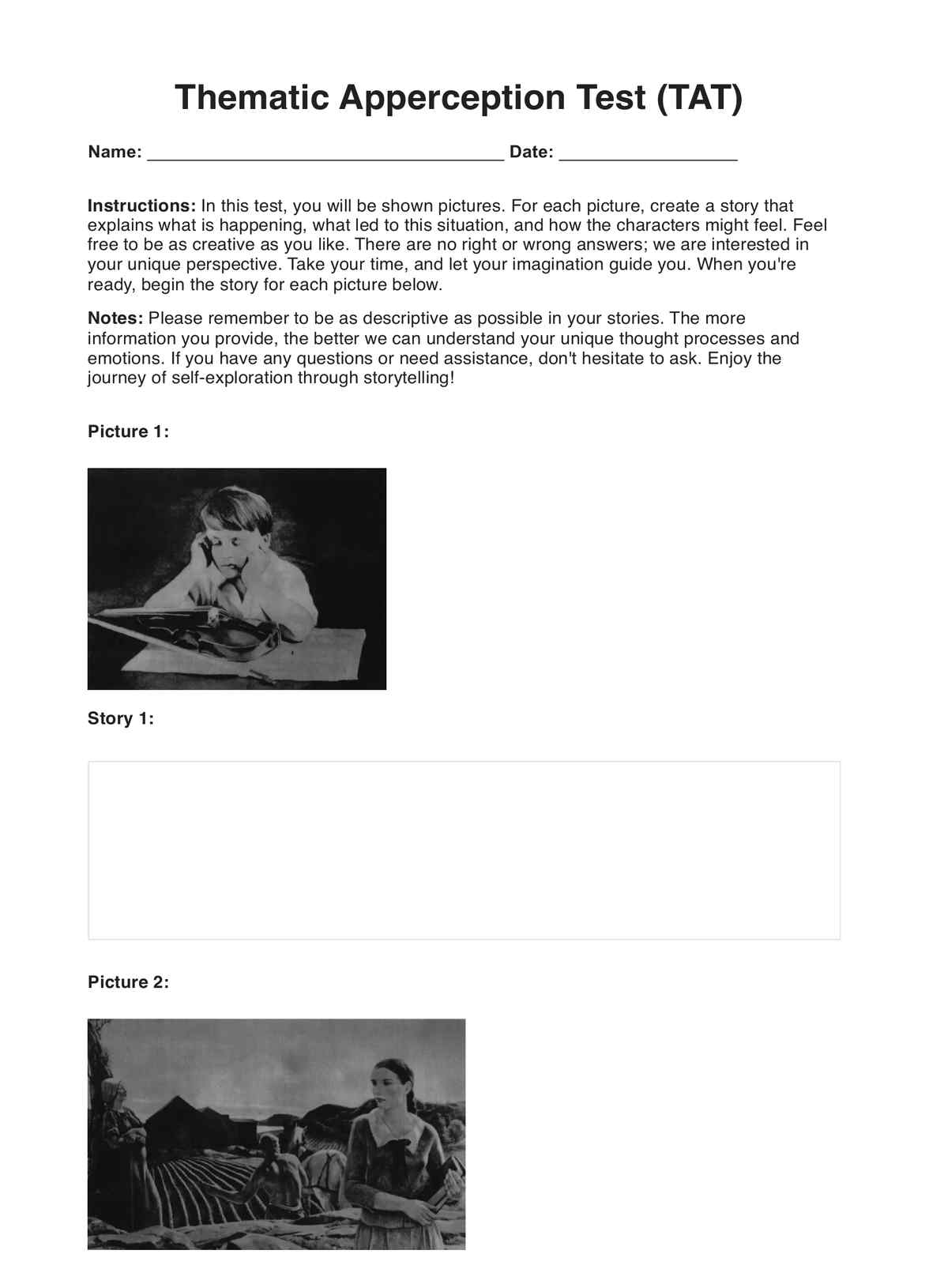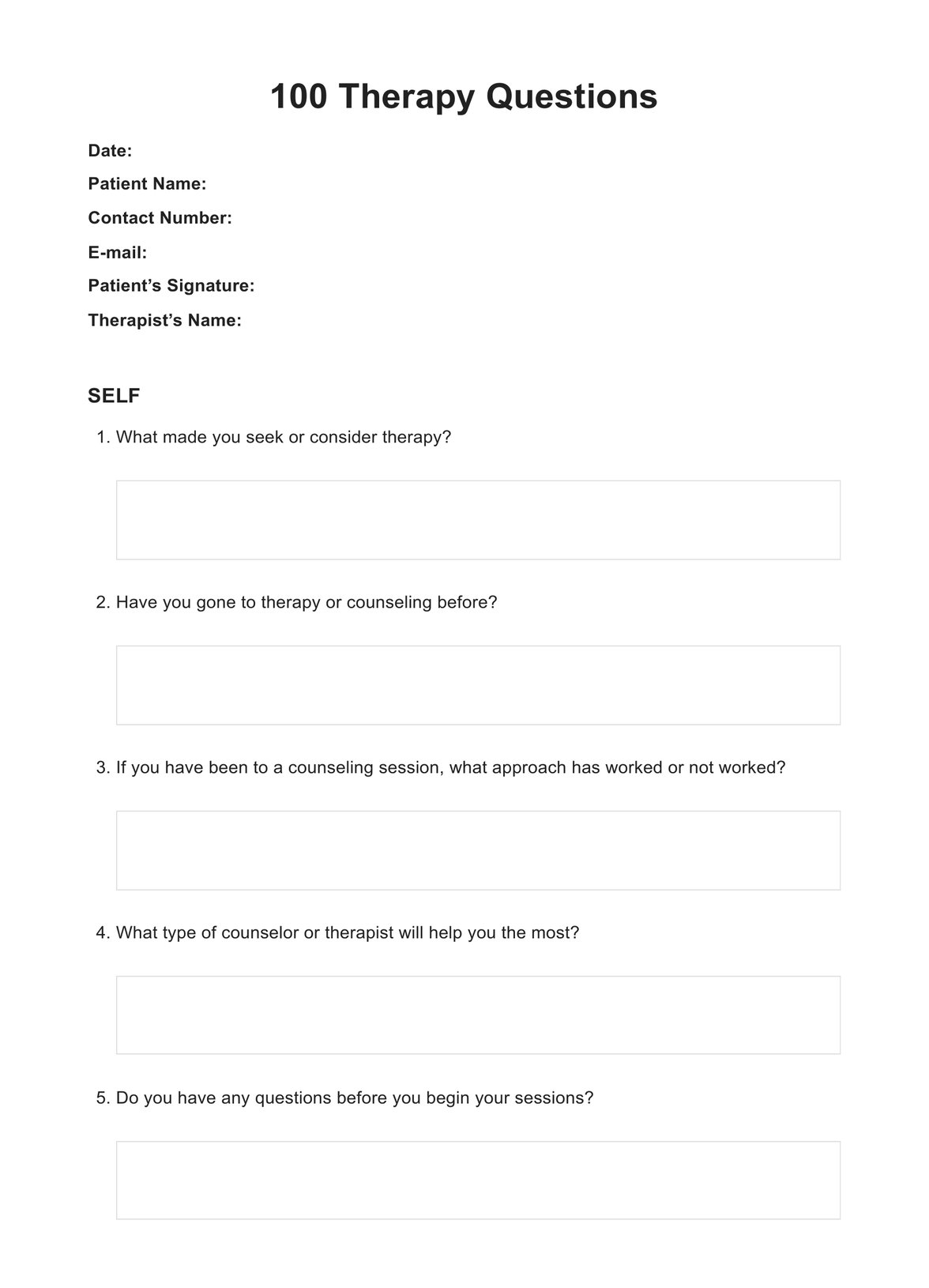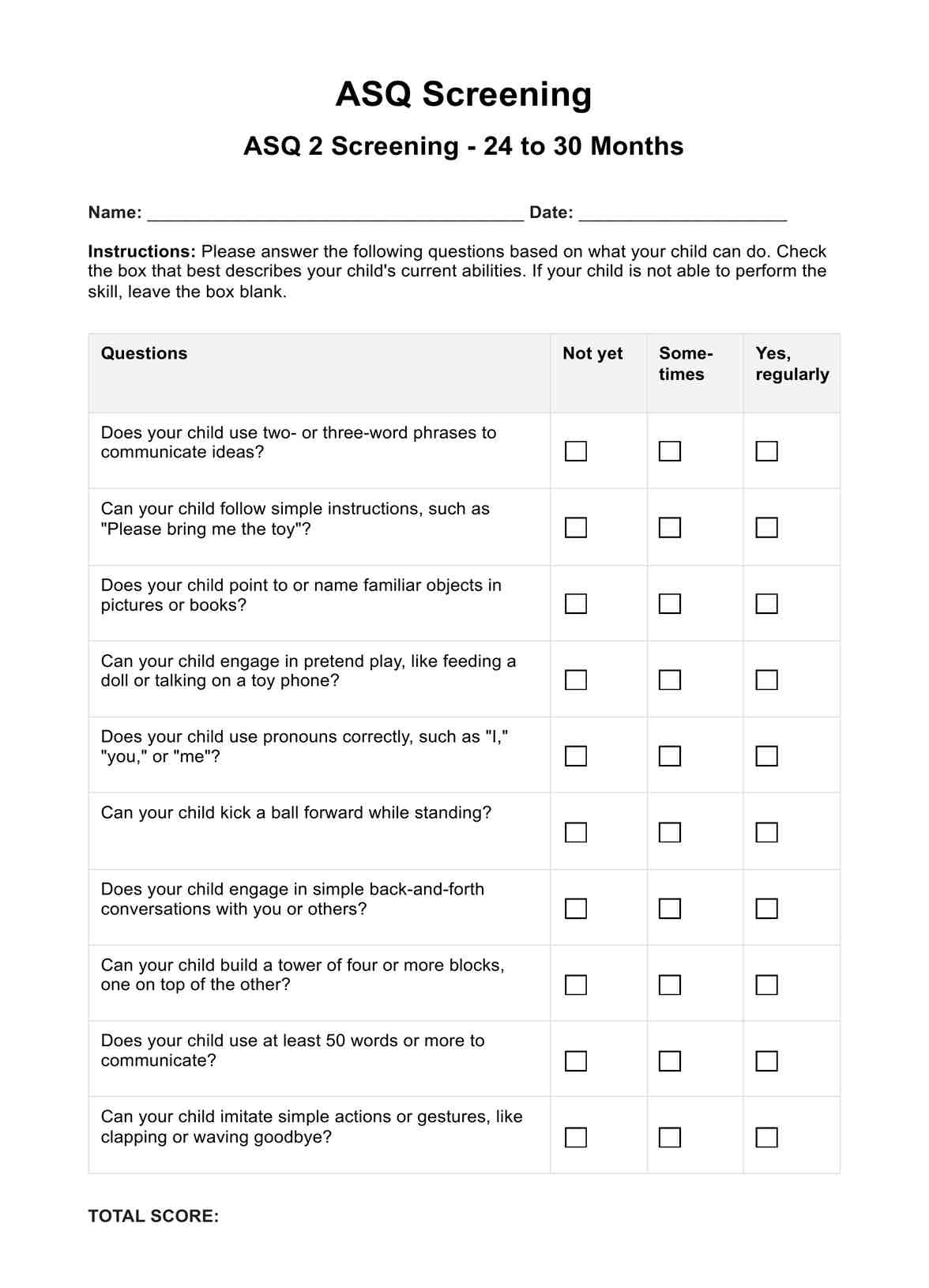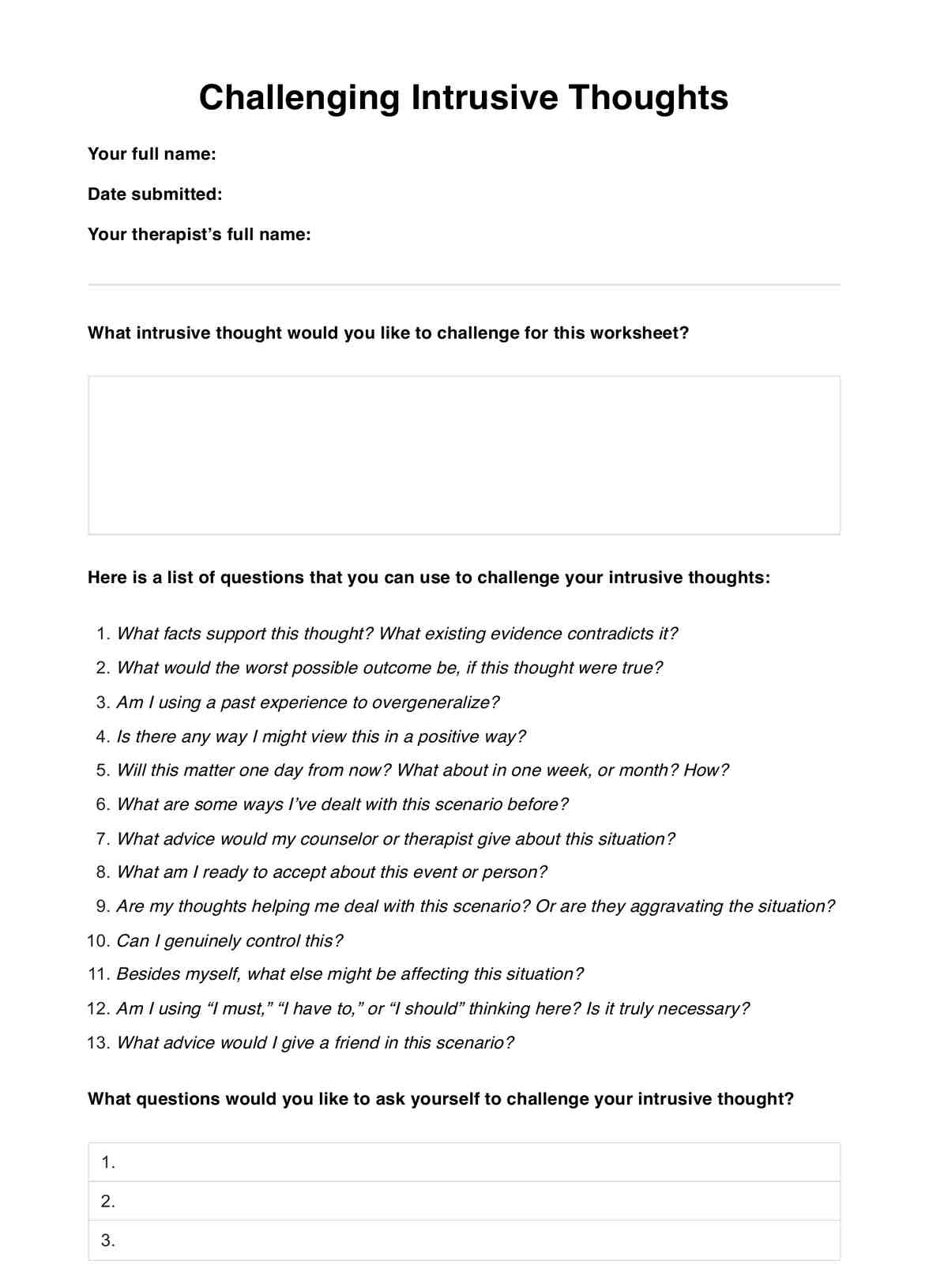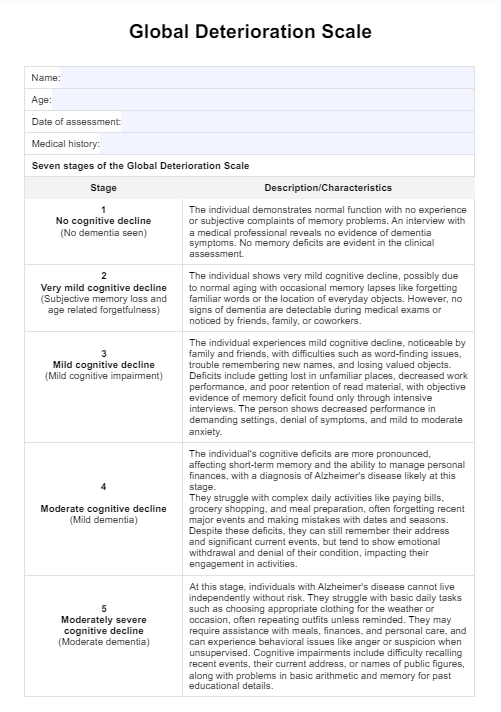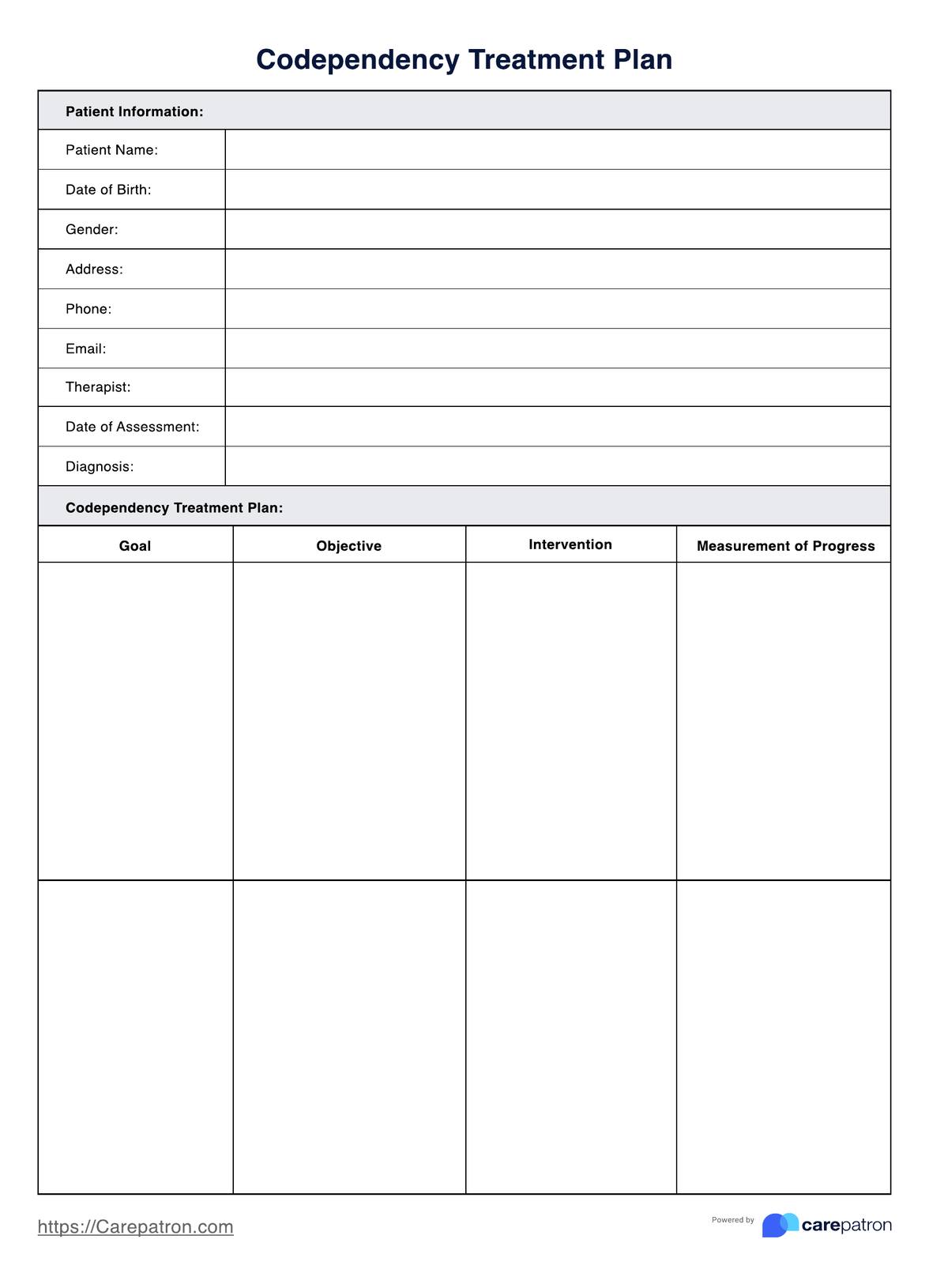Lapse and Relapse CBT Worksheet
Prevent setbacks with the Lapse and Relapse CBT Worksheet. Identify triggers, warning signs, and coping strategies in your behavior change journey.


What is Cognitive Behavioral Therapy?
Cognitive Behavioral Therapy (CBT) is a highly effective therapeutic approach in treating substance abuse disorders. CBT operates on the principle that our thoughts, emotions, and actions are closely intertwined, and it focuses on identifying and transforming harmful thought patterns and behaviors to promote emotional well-being and healthier choices.
When addressing substance abuse, CBT plays a pivotal role in breaking the cycle of addiction. It begins by helping individuals recognize the thoughts and emotions that trigger their substance use. By pinpointing these triggers, individuals gain the capacity to develop effective strategies for managing them.
Another critical aspect of CBT in the context of substance abuse is addressing cognitive distortions. These distortions can include justifying drug use or downplaying its negative consequences. Through guided therapy sessions, individuals learn to challenge and reframe these distorted beliefs, fostering a more accurate and constructive self-perception.
CBT equips individuals with coping skills to manage cravings and urges, an essential component of substance abuse treatment. Patients acquire techniques for redirecting their focus, engaging in healthier activities, and building a repertoire of strategies to resist the urge to use substances.
Moreover, CBT encourages individuals to set realistic goals and monitor their progress. This goal-oriented approach cultivates a sense of empowerment and self-determination, which can serve as a powerful motivator for those in recovery.
The effectiveness of CBT in substance abuse treatment is well-documented. Its integration into comprehensive care plans is crucial, and can facilitate this integration seamlessly. Platforms like Carepatron can aid in coordinating CBT interventions among healthcare providers, ensuring patients receive consistent, evidence-based care tailored to their needs.
Lapse and Relapse CBT Worksheet Template
Lapse and Relapse CBT Worksheet Example
How to use the Lapse and Relapse CBT Worksheet
Step 1: Introduction
Begin by introducing the purpose of the worksheet. Explain that it's designed to help individuals recognize the difference between a lapse and a relapse, two common challenges in behavior change.
Step 2: Define Lapse and Relapse
In this section, define what a lapse and a relapse mean. A lapse refers to a brief slip or deviation from the desired behavior, whereas a relapse is a more significant return to the old behavior pattern.
Step 3: Identify Personal Triggers
Encourage the individual to list the triggers that might lead to a lapse or relapse. These could include stress, peer pressure, cravings, or specific situations.
Step 4: Warning Signs
Ask the individual to recognize the early warning signs that may precede a lapse or relapse. These could be emotional states, thoughts, or behaviors that indicate vulnerability.
Step 5: Coping Strategies
Help the individual brainstorm coping strategies when they encounter triggers or warning signs. These strategies should be healthy alternatives to the undesired behavior.
Step 6: Create an Action Plan
Guide the individual in creating a concrete action plan for addressing both lapses and relapses. This plan should outline the specific steps they will take if they find themselves in a high-risk situation.
Step 7: Practice and Review
Encourage regular practice of the coping strategies and action plan. Periodically review the worksheet to update triggers and strategies as needed.
Step 8: Seek Support
Emphasize the importance of seeking support from a therapist, support group, or trusted individuals when facing challenges. Encourage open communication about lapses or relapses.
Making use of this cognitive distortions template and action plan template can uplift your practice and improve client experiences.
When would you use this Lapse and Relapse CBT Worksheet?
The Lapse and Relapse CBT Worksheet is a versatile tool used in various contexts and by different healthcare professionals to assist individuals in managing behavior change effectively. Here are some of the best and most appropriate times to use this assessment:
- Substance Abuse Treatment: This worksheet is especially valuable in substance abuse treatment programs. Substance use disorders often involve lapses and relapses, and individuals in recovery can use this tool to identify triggers, warning signs, and coping strategies to prevent setbacks.
- Weight Management Programs: Healthcare professionals, such as dietitians and therapists, can employ this worksheet to help individuals working on weight loss goals. It aids in recognizing situations that may lead to overeating or unhealthy choices, empowering individuals to make better decisions.
- Smoking Cessation Programs: Smoking cessation counselors can utilize this worksheet to assist individuals in quitting smoking. It helps individuals identify cravings, triggers, and strategies to avoid relapses.
- Mental Health Treatment: Therapists and counselors working with clients with depression, anxiety, or other mental health concerns can use this tool to address lapses and relapses in managing symptoms. It helps clients recognize early warning signs and develop coping mechanisms.
- Health and Wellness Coaching: Health and wellness coaches can incorporate this worksheet into their sessions with clients pursuing various lifestyle changes, such as adopting a healthier diet, increasing physical activity, or managing stress.
- Support Groups: Facilitators of support groups for addiction recovery or other behavior change goals can introduce this worksheet to group members as a collaborative exercise for self-reflection and peer support.
- Primary Care Settings: Primary care physicians and nurses can recommend this worksheet to patients trying to make lifestyle changes to improve their health, such as managing chronic conditions like diabetes or hypertension.
What are the Benefits of Using this Lapse and Relapse CBT Worksheet?
The Lapse and Relapse CBT Worksheet offers numerous advantages for individuals striving to change positive behavior. These benefits are supported by research and clinical experience:
1. Enhanced Self-Awareness
Research has shown that self-awareness is crucial to behavior change. This worksheet helps individuals identify triggers and warning signs, leading to a deeper understanding of their vulnerabilities.
2. Prevention of Setbacks
The worksheet empowers individuals to anticipate lapses and relapses, allowing them to implement coping strategies proactively. This reduces the likelihood of setbacks in their behavior change journey.
3. Tailored Coping Strategies
By prompting individuals to brainstorm coping strategies, this tool fosters the development of personalized, practical techniques for managing challenging situations. This personalization improves the chances of success.
4. Improved Resilience
Resilience is critical to maintaining behavior change. The worksheet encourages individuals to create action plans for handling lapses and relapses, enhancing their ability to bounce back from setbacks.
5. Support in Multiple Contexts
The worksheet is versatile and can be used in various settings, including substance abuse treatment, weight management, mental health therapy, and primary care. Its adaptability makes it a valuable resource for different behavior change goals.
6. Free and Accessible
The availability of a free Lapse and Relapse CBT Worksheet makes it accessible to a broader audience, ensuring that individuals from diverse backgrounds can benefit from its guidance and tools.
Incorporating the Lapse and Relapse CBT Worksheet into therapeutic interventions and self-help strategies can significantly enhance an individual's capacity to navigate the challenges of behavior change. Its proven benefits in increasing self-awareness, preventing setbacks, and promoting resilience underscore its value in supporting individuals toward healthier and more positive behaviors.
Commonly asked questions
The time required to complete the worksheet varies depending on individual needs and the complexity of one's behavior change goals. Generally, it can take 30 minutes to an hour to thoroughly review the worksheet.
The Lapse and Relapse CBT Worksheet is often available as a downloadable PDF from various sources, including healthcare providers, therapy websites, or support groups. It can be printed out for use or filled out electronically.
This worksheet is most beneficial when used proactively, as a preventive tool, or when individuals face challenges in maintaining behavior change. It can be employed in various contexts, such as substance abuse treatment, weight management, or mental health therapy.
The Lapse and Relapse CBT Worksheet is designed for individuals striving to make positive behavior changes. It can be used by anyone seeking to identify triggers, warning signs, and coping strategies to prevent lapses and relapses in their behavior change journey.


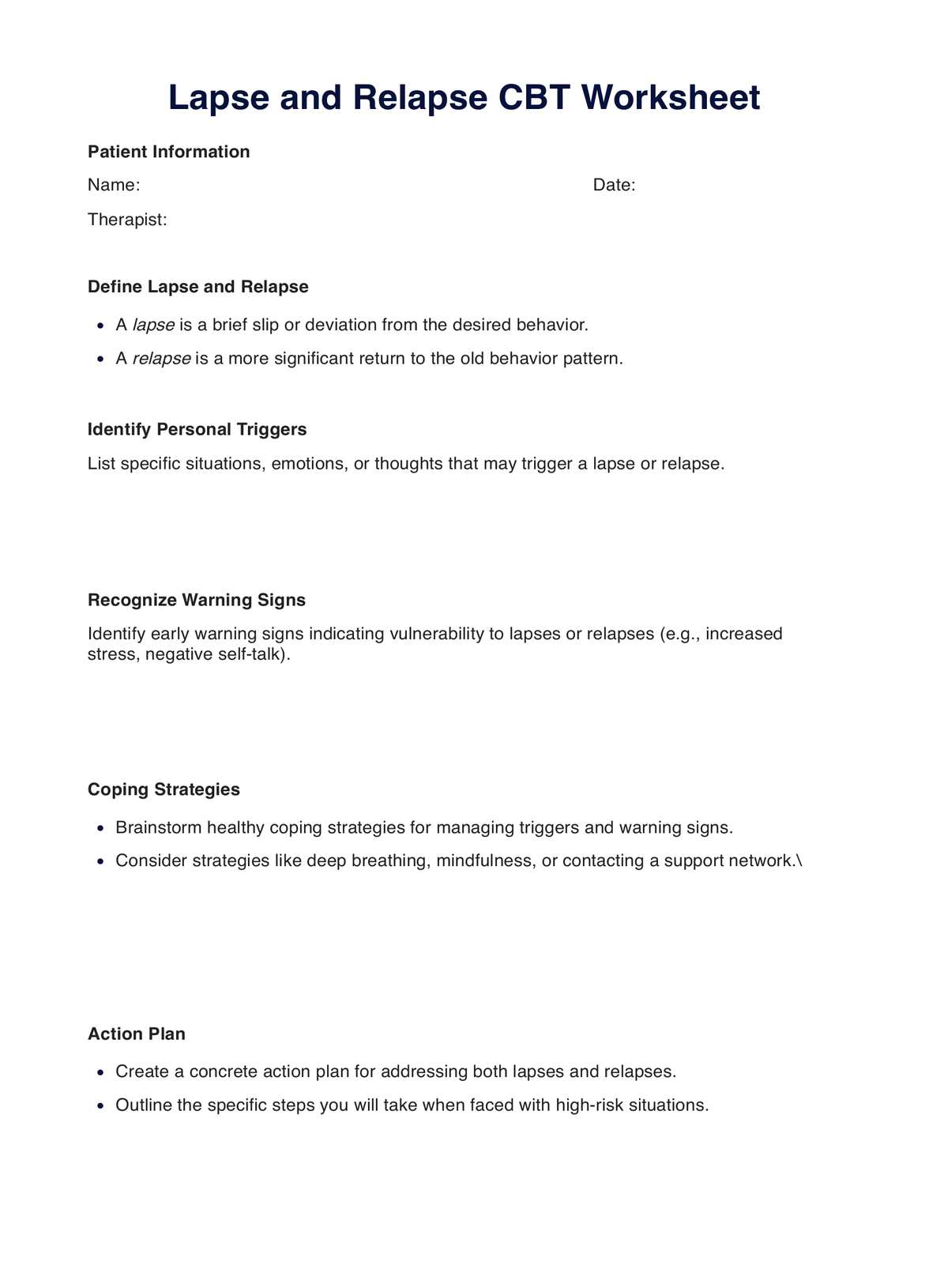
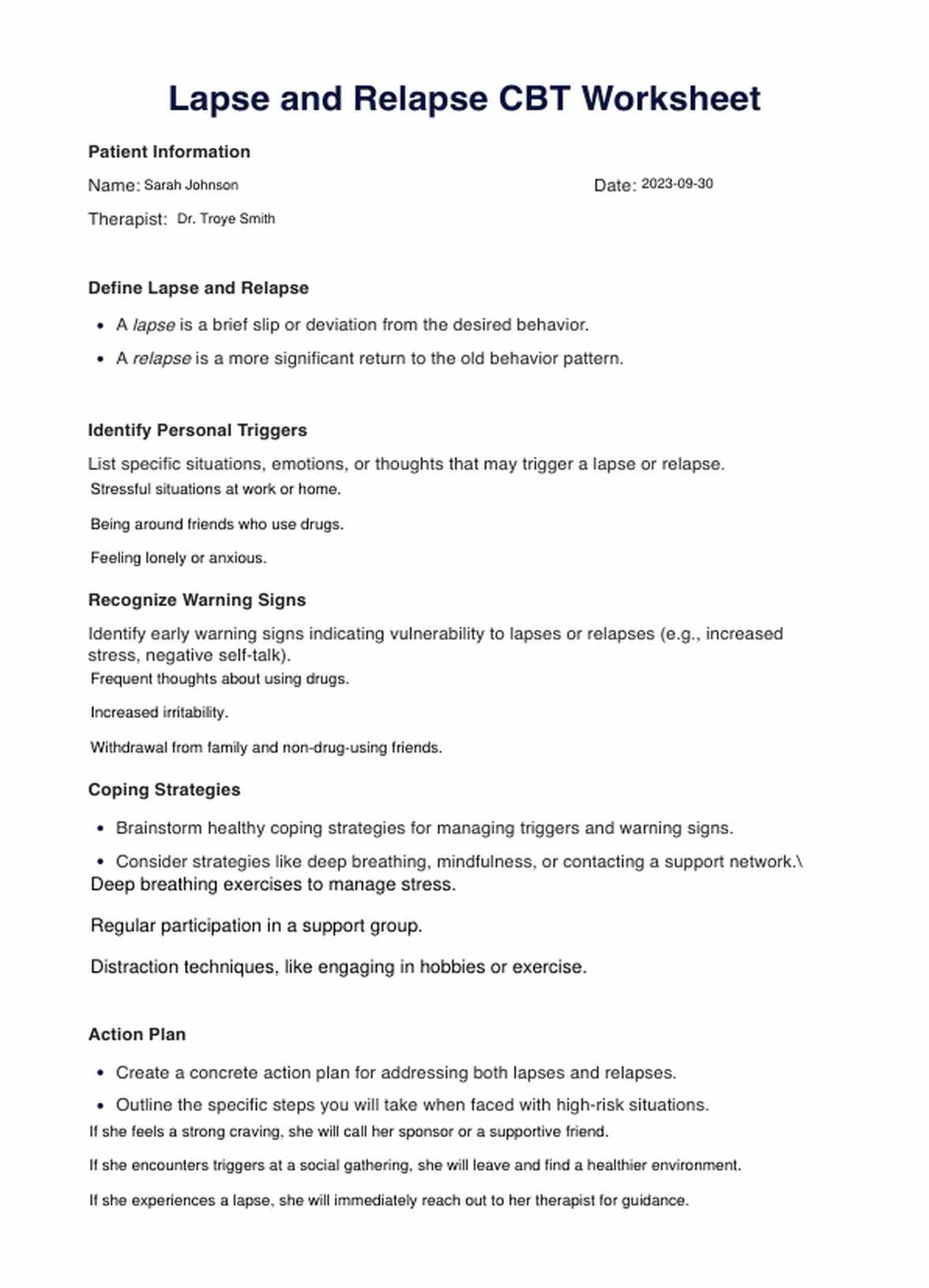















-template.jpg)


